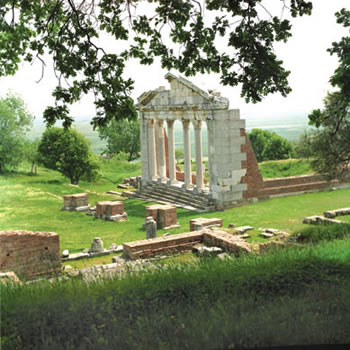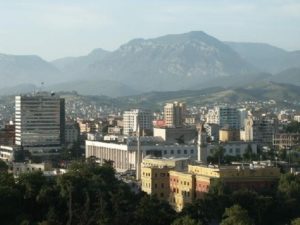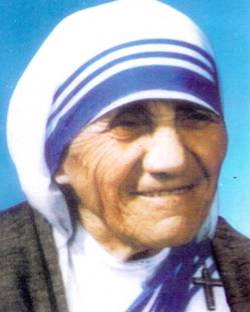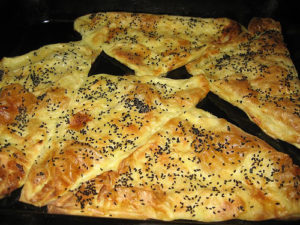Receive our newsletter
Your e-mail address is only used to send you our newsletter and information about the activities of Strasbourg Europe. You can always use the unsubscribe link included in the newsletter.
 With a combination of Greek, Roman, Italian and Turkish cultures, Albania benefits from the cultural heritage of the Mediterranean shores. Hindered by political instability, which has plagued the Balkans for centuries, Albania experienced several military conflicts first-hand during the 1990’s, notably the Kosovo Conflict. However, Albania played a central role for NATO and the United States throughout that tumultuous period.
With a combination of Greek, Roman, Italian and Turkish cultures, Albania benefits from the cultural heritage of the Mediterranean shores. Hindered by political instability, which has plagued the Balkans for centuries, Albania experienced several military conflicts first-hand during the 1990’s, notably the Kosovo Conflict. However, Albania played a central role for NATO and the United States throughout that tumultuous period.
© albaniantourism.com
 The area around Tirana was already inhabited during the Neolithic period: a fertile plain, rich in wood and water, Tirana is centrally located between the Adriatic and eastern Albania. Mount Dajti, at the east of Tirana, is a national park which preserves the natural beauty of the country.
The area around Tirana was already inhabited during the Neolithic period: a fertile plain, rich in wood and water, Tirana is centrally located between the Adriatic and eastern Albania. Mount Dajti, at the east of Tirana, is a national park which preserves the natural beauty of the country.Pictures : Kruja, north-east of Tirana © Greg Ronnen Tirana
Rebirth of a capital © tirana.gov.al
 “ By blood and origin I am Albanian. My citizenship is Indian. I am a Catholic nun. As to my calling, I belong to the whole world. As to my heart, I belong entirely to the heart of Jesus.”
“ By blood and origin I am Albanian. My citizenship is Indian. I am a Catholic nun. As to my calling, I belong to the whole world. As to my heart, I belong entirely to the heart of Jesus.”
Mother Teresa, Oslo, ceremony of the Nobel Peace Prize.
Nicknamed the “Saint of the Lower Depths,” Mother Teresa is one of the leading figures of the twentieth century.
Born Agnes Gonxha Bejaxhiu in Skopje on the eve of World War I, she is the last of a family of three Albanian children. Fatherless at age 9, her mother started a small business to support the family. At 18, she expresses the wish to become a missionary. She left her parental home in Skopje and joined the Sisters of Loreto, an Irish community of nuns, and was sent to India in 1929, where she developped a particular affinity for the country. Thus she became Indian in 1947. In Darjeeling, she took her initial vows and chose the name Teresa. From 1929 to 1946, she taught at St. Mary’s College in Calcutta, before becoming director. Struck by the abject poverty of the inhabitants in the “slums”, she received permission from her superiors to leave the convent school and she decided devote herself to the poorest in the slums. In 1947, she founded the first school in the neighborhoods of Calcutta. In 1948, she received the Pope’s permission to leave her convent to serve the “poorest of the poor.” She began to wear a white sari with blue borders in 1950, and founded the Congregation of Missionaries of Charity. She never stopped caring for abandoned children, and is especially remembered for finding adoptive parents and establishing schools.
© http://nobelprize.org
Culinary traditions
 The tasty food is certainly one of the main draws of Albania. Albanian cuisine is varied, often described as being a cross between the savors of the Orient and the Occident. The cuisine of this region is characterized by notably fresh produce and grilled meats (mish zgare). Popular dishes include: byrek (a sort of puff pastry) with spinach and cheese, the fërgesë Tiranian (a mix of yogurt and grilled meat), the qofte of Korça (diced meat covered in a savory spice sauce), and the gliko of Përmet and of Korça (a jam of either apples or pears).
The tasty food is certainly one of the main draws of Albania. Albanian cuisine is varied, often described as being a cross between the savors of the Orient and the Occident. The cuisine of this region is characterized by notably fresh produce and grilled meats (mish zgare). Popular dishes include: byrek (a sort of puff pastry) with spinach and cheese, the fërgesë Tiranian (a mix of yogurt and grilled meat), the qofte of Korça (diced meat covered in a savory spice sauce), and the gliko of Përmet and of Korça (a jam of either apples or pears).
Imposters
In 1913, a circus duo pulled off one of the biggest scams in history. The German crook Otto Witte took the identity of a clown, and decided to pretend to be the nephew of the Sultan, Prince Halim Eddine. He was helped in his task by his compagon Schlepsig Max, whom he met in a prison in Barcelona where he was serving a sentence for fraud. He was crowned king, claiming to be Otto I, and then declared war in Montenegro. Exposed three days later, he fled with some of the treasure.
© ansichtskarten-pankow.de
Your e-mail address is only used to send you our newsletter and information about the activities of Strasbourg Europe. You can always use the unsubscribe link included in the newsletter.
Information Center
on the European Institutions (CIIE)
Europe Direct Information Center
All rights reserved to the CIIE
Non-profit organization
Mailing address
1 allée Kastner
67000 Strasbourg
France
Visitors entrance
8 rue Boecklin
67000 Strasbourg
France
To provide the best experiences, we use technologies such as cookies to store and/or access device information. Consenting to these technologies will allow us to process data such as browsing behavior or unique IDs on this site. Failure to consent or withdrawing consent may adversely affect certain features and functions.
Europe Direct network
The CIIE team
Contact information and opening hours
Lieu d’Europe
The CIIE offices
Contact us
CIIE’s Documentation Centre & Publications
School presentations & Activities
Borrowing of learning material
Activities for the general public
Institutions of the European Union in Strasbourg
Institutions Under the Authority of the Council of Europe
Other European Organisations in Strasbourg
Sessions of the European institutions in Strasbourg
Visiting the institutions
Map of the European district of Strasbourg
Institutions in Strasbourg in photos
Discover artistic Europe
National holidays of the member states of the Council of Europe